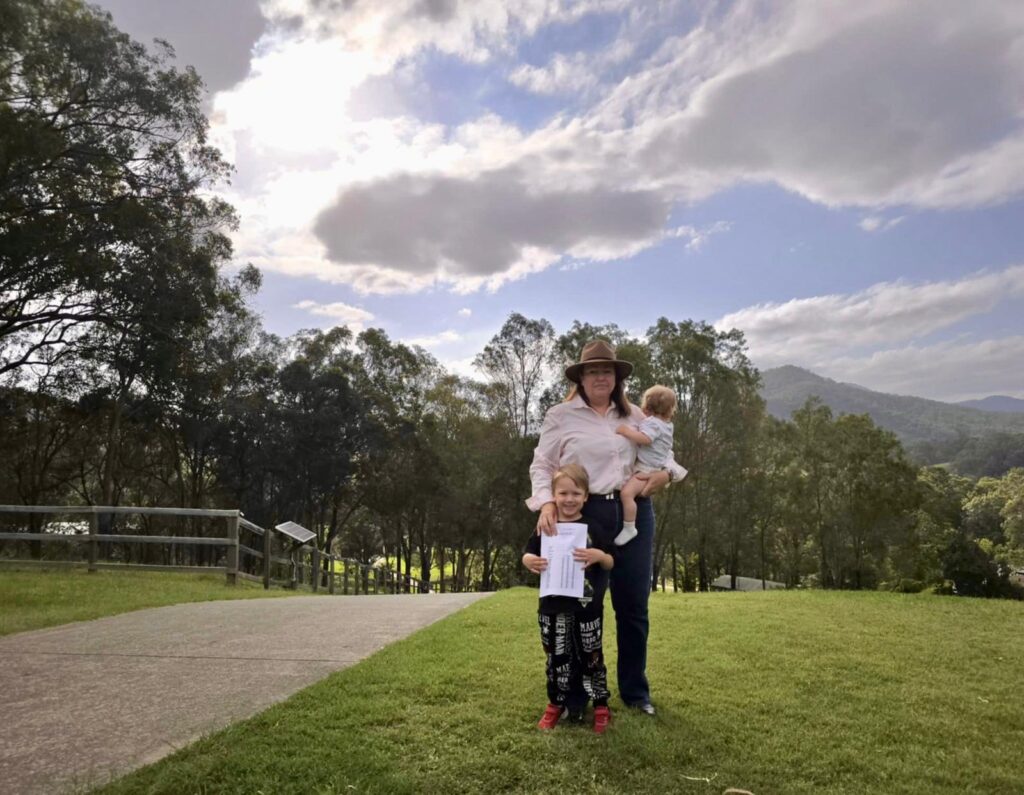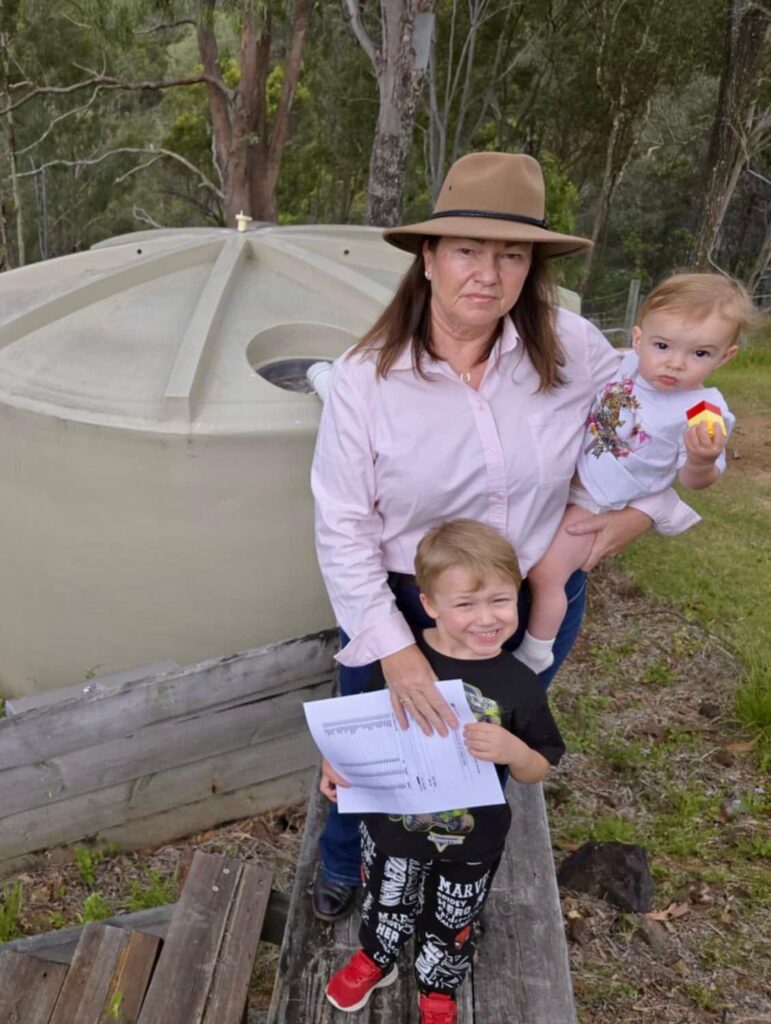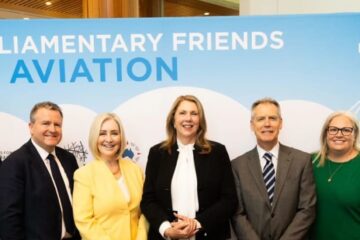BFPCA Media Release, 23 October 2024
- Several Queensland residents who rely on rainwater harvesting have tested positive for lead in their tank water, likely due to lead emissions from aircraft.
- Both Steven Miles and David Crisafulli have declined to ban leaded aviation gasoline (avgas).
- In 2023, 69.8 million litres of avgas were sold in Australia, releasing 39 tonnes of lead into the environment, predominantly around airports.
- Aircraft at Brisbane and Archerfield Airports are still using leaded avgas, even though it was banned in cars in 2002 due to toxic air pollution.
- Lead exposure causes serious health harms, particularly to children, causing cognitive impairments, developmental delays, and behavioural problems.
- No government body monitors lead emissions from aircraft in Queensland, leaving communities vulnerable to unmeasured lead exposure.
- The EU will phase out leaded avgas next year (2025) and the USA by 2030.
Brisbane Flight Path Community Alliance (BFPCA) is calling for urgent action on the continued use of leaded aviation gasoline (avgas) by aircraft operating from Brisbane and Archerfield Airports. Despite leaded petrol being banned in cars in 2002 due to its harmful effects, avgas continues to fuel many older piston-engine aircraft in general aviation. The fleet includes aircraft with an average age of 37.7 years for fixed-wing and 21.6 years for rotary aircraft, many of which still rely on avgas containing tetraethyl lead (TEL), a toxic additive phased out in other industries decades ago.
According to the Australian Petroleum Statistics, 69.8 million litres of avgas were sold in Australia in 2023, resulting in the release of 39 tonnes of lead into the environment, primarily around airports.
These planes fly low over Brisbane’s suburbs daily, dispersing harmful lead particles into the air, soil, and water, posing serious health risks, especially for children and pregnant women. Research has shown that lead exposure has no safe threshold, with even small amounts leading to cognitive impairments, lower IQ, learning disabilities, and behavioural problems like ADHD and aggression. The cumulative effect of lead in the body causes long-term damage, and its continued use in aviation puts communities near airports, particularly those relying on tank water, at significant risk. Several residents in Samford Valley and Upper Brookfield have already reported positive lead tests in their rainwater.


Alarmingly, no government body monitors lead levels from aircraft emissions in Queensland or Australia. In 2013, under Premier Campbell Newman, the Queensland Government discontinued routine monitoring of lead in the air around South East Queensland. This lack of data leaves a critical gap in understanding the extent of the exposure, especially in high-traffic areas near airports. Studies from the UK and the US suggest that these areas may be experiencing elevated lead levels, potentially exceeding the National Environmental Protection Measure (NEPM) standard of 0.50 µg/m³.
In the recent Senate Inquiry hearing in Canberra on 20 Sep 2024, it was revealed that, despite the ongoing use of leaded avgas, no government body is currently monitoring lead levels from aviation in the air anywhere in Australia.
Senator HODGINS-MAY: You don’t? Basically, I was just going to follow up on that and ask if it’s correct that none of you—the department, Airservices Australia or CASA—collect data about the use of leaded fuel.
Mr Marcelja: That’s correct; yes.
Senator HODGINS-MAY: You don’t?
Mr Marcelja: We don’t collect data. To my knowledge nobody does.
Senator HODGINS-MAY: Is it correct that leaded fuel is used by aircraft at both Brisbane and Archerfield airports?
Mr Marcelja: Low-lead fuel is used by most general aviation aircraft around the country; yes.
Senator HODGINS-MAY: Is there any explanation why no-one collects data on this?
Mr Marcelja: I guess the data would only exist in the volumes of fuel sold. The fuel providers might be able to provide volumes, but there’s no requirement for anyone at this table to collect the data, so nobody does that.
Source: Hansard transcript, page 49
While data from the Australian Petroleum Statistics confirms that on average up to 39 tonnes of lead from avgas is released into the environment each year, primarily around airports, there is no routine monitoring of lead emissions in the vicinity of airports where avgas-fuelled planes operate daily. This is a significant public health oversight, particularly for children who are most vulnerable to lead exposure. This revelation is especially worrying for nearby schools such as Acacia Ridge State School, Watson Road State School (Acacia Ridge), St Brendan’s Catholic Primary School (Moorooka), Airport Drive Early Learning Centre (Brisbane Airport), and Hendra State School.
A 2023 US-based study confirmed a strong correlation between proximity to airports and elevated blood lead levels in children, particularly within 500 meters of airports. It found that blood lead levels increased with the volume of piston-engine aircraft traffic and the amount of avgas sold.
This is not just a local issue—globally, the aviation industry is moving towards phasing out leaded fuel. The European Union has committed to phasing out leaded avgas by next year (2025), and the United States plans to eliminate its use by 2030. Yet, Australia has no clear strategy, and political leaders, including Steven Miles and David Crisafulli, have declined to ban leaded avgas in Queensland.
In his response letter to BFPCA, Premier Steven Miles said: “Thank you for your suggestion to ban all lead-based aircraft operations. Our government is committed to supporting the uptake of sustainable aviation fuel in Queensland to not only displace the use of lead in aviation fuel but to also significantly lower overall emissions.” – BFPCA argue that this is ill-informed. A majority of Australia’s general aviation fleet, due to its age, uses lead-based avgas, which cannot currently be substituted with sustainable aviation fuel (SAF).
Concerned residents across 220+ suburbs have volunteered to distribute and deliver more than 40,000 BFPCA flyers highlighting the noise and lead pollution from Brisbane’s flight paths. This grassroots effort demonstrates the growing concern among Brisbane’s communities about the ongoing health impacts of leaded avgas and aircraft noise pollution.
BFPCA is working tirelessly to raise awareness of these pressing issues, and has asked the three main parties were they stand. You can read their responses in full at https://bfpca.org.au/qld24/
Quotes Attributable to Prof. Marcus Foth, Chair of BFPCA
“Communities under Brisbane and Archerfield Airport’s flight paths are being exposed to lead-laced plane exhaust every day. There is no safe level of lead exposure. The continued use of leaded avgas, despite its known health risks, is unacceptable.
“Lead accumulates in the body and can cause long-term damage, particularly in children. It is time for Australia to catch up with global efforts and phase out leaded avgas before more harm is done.”
“We have seen no action from our political leaders. Despite growing evidence and thousands of complaints, there has been no meaningful response from local, state, or federal governments to monitor or regulate the use of leaded avgas. Steven Miles and David Crisafulli have both declined to engage with BFPCA on this issue.”
“The fact that Queensland stopped monitoring lead emissions in 2013, under Premier Campbell Newman, leaves us in the dark about the real extent of exposure. The United States and European Union are already moving forward to eliminate leaded avgas. Australia cannot afford to be left behind.”
“As the Queensland state election approaches, it is crucial for voters to understand the health risks posed by leaded avgas. Our children, schools, and families deserve better. We need a clear plan to transition to a sustainable aviation industry and protect the health of Brisbane residents.”
About BFPCA
With the launch of Brisbane Airport’s New Parallel Runway on 12 July 2020 came a new airspace design and flight paths that concentrate aircraft noise over densely populated residential areas.
Brisbane Airport and Airservices Australia sold this project to Brisbane communities suggesting the New Parallel Runway will enable them to prioritise “over water” operations that direct planes away from residential areas. The CEO Gert-Jan de Graaff is on the record saying, “the net effect of aircraft flying over the city will decrease.”
Brisbane families and communities are suffering from excessive noise pollution and associated health and related impacts from Brisbane Airport’s new flight paths launched in July 2020. The Aircraft Noise Ombudsman report, the Brisbane Airport PIR Advisory Forum (BAPAF) and flight path design consultants TRAX International have all confirmed that Brisbane communities were misled using flawed noise modelling, deceiving community engagement, and offered inadequate noise abatements.
Brisbane Flight Path Community Alliance (BFPCA) came together in 2020 to fight back on behalf of all Brisbane families and communities experiencing this noise pollution.
For more background information, visit: https://bfpca.org.au/
References
Fruh, V., Rifas-Shiman, S. L., Amarasiriwardena, C., Cardenas, A., Bellinger, D. C., Wise, L. A., White, R. F., Wright, R. O., Oken, E., & Claus Henn, B. (2019). Prenatal lead exposure and childhood executive function and behavioral difficulties in project viva. Neurotoxicology, 75, 105–115. https://doi.org/10.1016/j.neuro.2019.09.006
Klemick, H., Guignet, D., Bui, L. T., Shadbegian, R., & Milani, C. (2022). Cardiovascular Mortality and Leaded Aviation Fuel: Evidence from Piston-Engine Air Traffic in North Carolina. International Journal of Environmental Research and Public Health, 19(10). https://doi.org/10.3390/ijerph19105941
Masiol, M., & Harrison, R. M. (2014). Aircraft engine exhaust emissions and other airport-related contributions to ambient air pollution: A review. Atmospheric Environment , 95, 409–455. https://doi.org/10.1016/j.atmosenv.2014.05.070
Mills, A., & Peckham, S. (2022). Lead exposure from general aviation emissions in the UK: A review and call for action. Public Health Challenges, 1(4). https://doi.org/10.1002/puh2.27
Resongles, E., Dietze, V., Green, D. C., Harrison, R. M., Ochoa-Gonzalez, R., Tremper, A. H., & Weiss, D. J. (2021). Strong evidence for the continued contribution of lead deposited during the 20th century to the atmospheric environment in London of today. Proceedings of the National Academy of Sciences of the United States of America, 118(26), e2102791118. https://doi.org/10.1073/pnas.2102791118
Wing, S. E., Larson, T. V., Hudda, N., Boonyarattaphan, S., Fruin, S., & Ritz, B. (2020). Preterm Birth among Infants Exposed to in Utero Ultrafine Particles from Aircraft Emissions. Environmental Health Perspectives, 128(4), 47002. https://doi.org/10.1289/EHP5732
Zahran, S., Keyes, C., & Lanphear, B. (2023). Leaded aviation gasoline exposure risk and child blood lead levels. PNAS Nexus, 2(1), gac285. https://doi.org/10.1093/pnasnexus/pgac285


